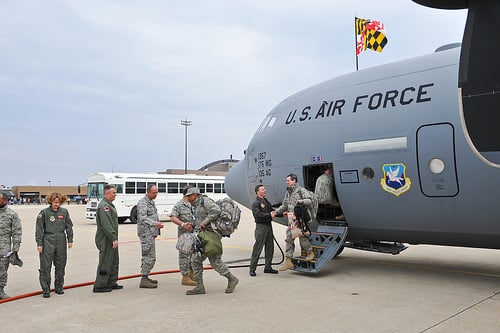Published on
Increasing Retention Of Veterans In Higher Education

The May 1 announcement by the President about a new agreement with Iraq to draw down troops over the next 19 months, following the reduction of approximately 10,000 U.S. troops from Afghanistan in 2011, signals the current and largest wave of veterans transitioning from military to civilian life since the period following the Vietnam War.
Many schools are seeking to remedy common obstacles to veteran student success in college by becoming military friendly in a variety of ways. While most schools have staffed certifying officials to process GI Bill benefits, and are establishing student veteran centers, organizations and veteran-friendly financial policies, awareness of the challenges veterans face must permeate the entire institution.
Veterans have a variety of reasons for having joined the military, a myriad of experiences while engaged, and a range of emotional responses when they separate. Some wish to self-identify as veterans; others do not. Assumptions and biases among the civilian community often assign political associations to veterans who have a common identity, but a myriad of experiences, beliefs and positions on the nation’s military actions. The strong political association with military activity and the veteran community gives rise to a form of identity politics. This dynamic often plays out in college and university classrooms and on campuses which can isolate or marginalize veteran students. Internal communication campaigns can raise awareness of veterans’ issues across the institution and inform faculty and staff of the issues of greatest concern and challenge to these students. Identity politics must be part of this dialogue.
According to a survey published in the Washington Post, veterans are more likely to transfer between schools or to enroll part time. One in five combat veterans reported having a disability, compared with one in 10 non-veterans. Veterans also spend more time working or caring for a family than do traditional college students*. Similar to adult, nontraditional students as a whole, veterans add value to a learning community through their maturity, experience, and focus on educational and professional goals. So they arrive on campus highly motivated and ambitious, but in need of a well-researched, organized, and coordinated program of support.
Years in a military environment conditions people to follow a prescribed order and set of rules, a bureaucracy that is not paralleled in academic or professional environments in the private sector. Veterans can find the structures and bureaucracies of colleges and universities challenging and difficult to negotiate, and a centralized resource to demystify and make transparent the policies and procedures is a solid investment that saves time and streamlines the experience of veterans as they become oriented to dramatic changes in life, work and study environments. The coordination of centralized and decentralized services will assure that the decentralized academic units provide guidance and expertise to veterans as they do for all students, and the veteran’s services centers provide specialized expertise and support to these students, as well as serve as a referral to external support networks for counseling and employment services.
Retention of veterans begins with pre-admissions counseling appointments to review their previous academic and work experiences , provide guidance on the college application process and the GI Bill payment process, advice on how to construct an academic and career path, and to inform veterans of the numerous curricular and co-curricular opportunities at the college or university. College application essay and resume writing workshops coach prospective students on how to translate their military skills into professional and academic language. For example, veterans need guidance to recognize how their military experiences afforded them marketable proficiencies, such as leadership and intercultural communication skills that map onto many civilian roles.
A college or university veterans’ service center, at a minimum, should conduct the following activities:
1) Become knowledgeable about the separation and reentry processes and communicate with veterans upon separation from the military
- In the recruitment process, begin to explain GI Bill benefits before the veterans begin the application process
- Provide information about the various institutions of higher education and the types of accreditation, such as regional and national, to facilitate the best match for each student. (Many veterans enroll in proprietary institutions with low admission barriers and later discover the credits will not transfer to a regionally accredited institution or serve them in the process of gaining admission to a graduate program.)
- Consider the veteran’s professional and family needs
2) Provide GI Bill training and financial planning workshops
- Develop web-based tuition calculators based on GI eligibility rates and the institutions tuition and fee scales
- Provide information about institutional and military scholarship and grant opportunities
3) Create a mechanism to research veterans needs and interests for services and programs
- Conduct focus groups and surveys of current veteran students to gain a better understanding of their needs, to learn what new programs will best address those needs, and to provide data and insights about the veteran student population to local community organizations. Routinely seek information from the veterans about what kinds of programs, services and social events the veterans and their families want
4) Develop veteran-specific orientation and first-year experience programs
- Conduct military to civilian resume workshops
- Identify and address risk factors that may inhibit student’s academic progress
- Design course materials for a first year experience that presents resources available to help optimize their academic, professional and personal success
- Design an online learning community to facilitate communication about academic resources
5) Create an advisory board of veterans who are alums and who serve on the faculty or staff at the college or university to provide networking and mentoring.
- Rally resources from veterans on campus and ROTC to provide mentoring and support
- Remain cognizant of the cultural and generational differences among the Vietnam-era, Desert Storm, and Iraqi Freedom veterans. Each has had distinct differences experiences that impact their perspectives when they reintegrate.
6) Construct a centralized, data driven system for tracking and analyzing data about veterans from application through graduation.
- Develop reports on enrollment and retention trends to use in the evaluation of various retention interventions.
- Provide data and reports to assist academic units whose responsibility is to offer curricular and career guidance; do not expect them to become experts in veterans issues
- Assure that there are veteran-friendly procedures in the budget and controller’s units so that no unnecessary fees are accrued if veterans are called to duty before the end of a semester and assure that veterans are advised about their best academic and financial options if they are called up.
7) Develop partnerships with veteran community organizations
- Refer veterans to external organizations based on the veteran’s needs and the external organization’s expertise in areas such as service connected disabilities, job placement services, behavioral health issues, suicide prevention, substance abuse, and homelessness.
Finally, awareness of the common experiences and attributes of the veteran population is key to optimizing their academic success. From the first stage and throughout the entire transition from military to academic and professional careers, this population is hesitant to ask for help. The thorough coordination of resources, respectful outreach and engagement, and frequent invitations to provide feedback and input will be the most valuate sources for both the veteran students and the institutions that that serve them.
—-
References
* Jenna Johnson, “Veterans who go back to school wish they had more support.” The Washington Post, November 4, 2010. http://www.washingtonpost.com/wp-dyn/content/article/2010/11/04/AR2010110409675.html?nav=mbot
Author Perspective: Administrator



